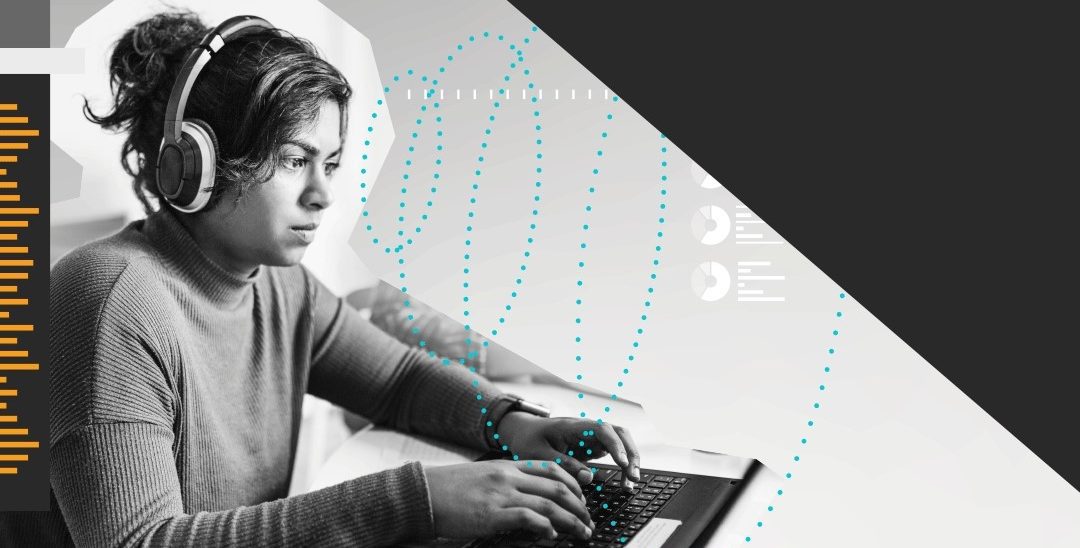SolarWinds IT Trends Report 2021: Building a Secure Future

SolarWinds IT Trends Report 2021: Building a Secure Future examines how technology professionals perceive the evolving state of risk in today’s business environment following the internal impact of COVID-19 IT policies and exposure to external breaches.
SolarWinds has released the findings of its eighth annual IT Trends Report. This year’s report, SolarWinds IT Trends Report 2021: Building a Secure Future, released eight months after the broad and highly sophisticated SUNBURST cyberattack, is part of its commitment to leading industry collaboration and transparency to prevent future cyberattacks. The report will help technology professionals navigate the new threat landscape. It examines how technology professionals perceive their organisations’ risk management and mitigation readiness after a year of rapid transformation fueled by the global pandemic. The study analyses the state of risk within the IT industry today. It guides workplace strategy, toolsets, preparedness, and leadership for companies to construct an organisation built to withstand risk.
Over the past year, tech pros were tasked with enabling a distributed global workforce and managing the adoption of public cloud services, as organisations quickly pivoted to implement a range of technologies to keep their businesses up and running during the pandemic. Against this backdrop, nearly every industry was confronted with the acceleration of high-level cybersecurity breaches, highlighting the potential risk of incomplete security policies and procedures across the industry. This unprecedented upheaval has served as a critical catalyst for a broader exploration of organisations’ exposure to enterprise IT risk of all kinds—including risk introduced by the implications of remote, distributed work—and the degree to which organisations are prepared to manage, mitigate, and prevent risk in the future.
The findings of the SolarWinds IT Trends Report 2021 uncover a reality in which exposure to enterprise IT risk is common across organisations. Still, perceptions of apathy and complacency surrounding risk preparedness are high as businesses exit a year of pandemic-driven “crisis mode.” Tech leaders have outlined key areas of technology investment and upskilling to prioritise cloud computing, network infrastructure solutions, and security/compliance—demonstrating an inherent awareness that falling behind is potentially the greatest risk of all. This year’s study reveals the immense opportunity ahead for tech pros and IT leadership to align and collaborate on priorities and policies to best position individual organisations and the industry at large to succeed with a future built for risk preparedness.
“Technology professionals today are under even greater pressure to ensure optimised, secure performance for remote workforces while facing limited time and resources for personnel training. When it comes to risk management and mitigation, prioritising intentional investments in technology solutions that meet business needs is critical,” said Sudhakar Ramakrishna, President and CEO, SolarWinds. “More than ever before, tech pros must partner closely with business leaders to ensure they have the resources and headcount necessary to proactively address security risks. And more importantly, tech pros should constantly assess their risk management, mitigation, and protocols to avoid falling into complacency and being ‘blind’ to risk.”
2021 Key Findings
SolarWinds IT Trends Report 2021: Building a Secure Future explores how tech pros perceive the state of risk in today’s business environment and how the global pandemic impacted technology investments across IT teams. Key findings show:
Security threats associated with external breaches and the internal impact of COVID-19 IT policies emerged as the leading macro trends influencing enterprise IT risk today.
- 40% of overall tech pro respondents state their organisations have had medium exposure to enterprise IT risk over the past 12 months.
- The level of perceived risk exposure differs by the size of an organisation. A sense of high-risk or extremely high-risk exposure is perceived more acutely by tech pros at mid-size organisations (32%) and enterprise (26%) counterparts as compared to their small business (16%).
- Security breaches are perceived to be one of the biggest external factors influencing an organisation’s risk exposure, with 42% of tech pros surveyed citing external security threats – like cyberattacks – as a top macro trend influencing their organisations’ risk exposure.
- However, COVID-19 had an even greater impact on organisations’ risk exposure, with tech pros flagging these top associated risk-inducing factors:
- Remote work policies (67%)
- The exponential growth of data as a result of new WFH needs (49%)
- Distributed workforce/employee relocation (41%)
- Likewise, 49% of tech pros surveyed said the accelerated shift to remote working was the number-one aspect of current IT environments that increased an organisation’s risk exposure. Following closely behind is a lack of skilled IT staff due to cost-cutting, consolidation, and/or outdated skillsets in the employee base (38%).
- 43% of respondents say security and compliance ranked in the top three technologies most critical to managing/mitigating risk within their organisations, followed by network infrastructure (35%) and automation (30%).
- Although external security threats are a leading risk factor, internal vulnerabilities resulting from remote/distributed environments cannot be overlooked in today’s work landscape.
Surveyed pros are confident in their risk management and mitigation preparedness strategies, although enterprise IT risk exists within their organisations.
- 88% of tech pros surveyed “agree” or “strongly agree” their IT organisations are prepared to manage, mitigate, and resolve risk factor-related issues due to the policies and procedures they already have in place.
- This finding is echoed by organisations’ careful approach to technology adoption and implementations in response to shifting demands of COVID-19 distributed work environments. Despite the accelerated timeline, 69% of respondents said standard or heightened risk management protocols were followed.
- That said, as detailed in a recent McKinsey report, tech pros and their IT organisations must be careful to avoid complacency in today’s ever-evolving risk landscape and be sure to refresh and strengthen their approach to risk management for the future.
While tech pros prioritise investments in security and compliance, network infrastructure, and cloud computing as core technologies to help manage risk, implementation is hampered by dwindling resources and access to personnel training.
- More than half (51%) of tech pros surveyed “agreed” or “strongly agreed” technology is the best way for organisations to manage, mitigate, and resolve issues related to risk.
- IT teams prioritised investment in security and compliance (43%) and network infrastructure (42%), followed by cloud computing (33%) to accommodate the unprecedented demands of COVID-19 and the shift to remote work.
However, despite understanding technology can play a critical role in enterprise IT risk management, barriers to its adoption and implementation exist. The top three challenges to utilising technology to mitigate and/or manage risk within organisations reported by surveyed tech pros are:
- Lack of training for personnel (51%)
- Unclear or shifting priorities (40%)
- Lack of budget/resources (37%)
- Implementation is further hampered by 31% of surveyed tech pros admitting that while some of their monitoring/management tools are integrated to enhance visibility across their IT environment(s)—whether on-premises, cloud-based or hybrid—other tools are still siloed.
Tech pros are overcoming these barriers by:
- Prioritising the introduction of new technologies to the environment (such as multi-factor authentication and/or additional/new monitoring) (45%)
- Developing policies and processes (43%)
Tech pros are capitalising on an opportunity to foster greater alignment and collaboration with senior leaders who will best position their organisations to manage and mitigate risks in the future.
- 60% of respondents are confident or extremely confident their IT organisations will continue to invest in risk management/mitigation technologies over the next three years.
- Tech pros from enterprise organisations are more likely to feel confident or extremely confident (67%) in future risk management investments than their small and mid-size business counterparts (58% and 50%, respectively).
- 64% perceive their organisation’s senior leaders or decision-makers to have a heightened awareness of risk exposure, believing it’s not “if” but “when” a risk factor will impact them. But while 38% of those respondents believe their organisation is prepared to mitigate and manage potential risk, 26% said their senior leaders have difficulty convincing other leaders of this reality, ultimately limiting resources to address risk.
- This reinforces how nearly one-third (29%) of tech pros surveyed state their IT organisations are improving alignment between IT business goals and corporate leadership in response to other tech adoption barriers. Some of these barriers include a lack of skilled IT staff triggered by cost-cutting, consolidation, outdated skillsets and a lack of budget/resources.
To explore and interact with the 2021 findings, please visit the SolarWinds IT Trends Index, a dynamic web experience presenting the study’s findings by region and additional insights into the data, as well as charts, graphs, and socially shareable elements. In addition, this year’s study features an interactive component where visitors to the web experience can see how they compare to the results.
The findings of this year’s Japan report are based on a survey fielded in March/April 2021, which yielded responses from 81 technology practitioners, managers, directors, and senior executives in Japan from the public- and private-sector small, mid-size, and enterprise organisations. All regions studied in 2021, as reported on the SolarWinds IT Trends Index, were North America, Australia, Germany, Hong Kong, Japan, Singapore, and the United Kingdom, with 967 respondents across all geographies combined.
SolarWinds Outlines Secure by Design Principles for a More Secure Future
SolarWinds has introduced an initiative to become Secure by Design to address the industry-wide ramifications of the SUNBURST cyberattack and help strengthen its security posture going forward. Under this approach, SolarWinds is focused on further securing its internal environment, enhancing its product development environment, and ensuring the security and integrity of the products it delivers as it seeks to evolve into an industry-leading secure software development company.
The learnings resulting from the SUNBURST investigation have also presented an opportunity for SolarWinds to lead an industry-wide effort around transparency and collaboration and for SolarWinds to develop a new model for secure software environments, development processes, and products. In partnership with former CISA leader Chris Krebs and former Facebook Chief Security Officer Alex Stamos (co-founders of the Krebs Stamos Group), SolarWinds is developing best practices to enhance the SolarWinds security posture and policies. As it does this, it also seeks to serve as a guide for other organisations as they work to prevent future attacks.
Additional Resources
READ MORE:
- Scaleup Spotlight: Climeworks is the key to fighting climate change
- How Wi-Fi6 will optimise hybrid working
- Which European countries have the best and worst cybersecurity?
- McAfee: How to make telehealth safer for a more convenient life online
About SolarWinds
SolarWinds is a leading provider of simple, powerful, and secure IT management software. Our solutions give organisations worldwide—regardless of type, size, or complexity—the power to accelerate business transformation in today’s hybrid IT environments. We continuously engage with technology professionals—IT service and operations professionals, DevOps and SecOps professionals, and Database Administrators (DBAs) – to understand the challenges they face in maintaining high-performing and highly available IT infrastructures and applications and environments. In places like our THWACK community, the insights we gain from them allow us to address customers’ needs now and in the future. Our focus on the user and commitment to excellence in end-to-end hybrid IT management has established SolarWinds as a worldwide leader in solutions for observability, IT service management, application performance, and database management.
For more news from Top Business Tech, don’t forget to subscribe to our daily bulletin!
